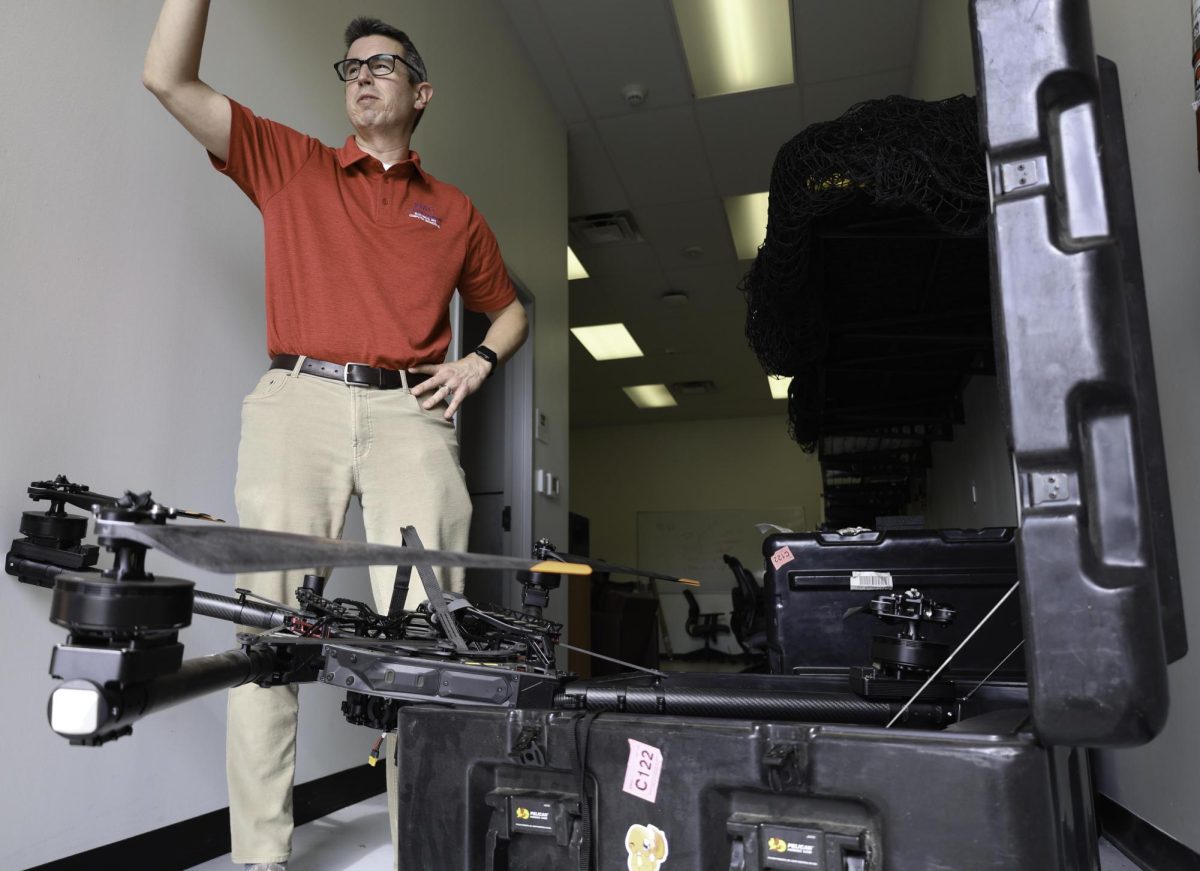By Alexandra Acosta
Overslept and late to class.
Without food in the mini fridge.
Accompanied by a loud, rumbling stomach.
The pain of abdominal emptiness after sleeping in a few hours more than expected.
A decision has to be made in order to get rid of this feeling.
As sophomore Andrea Eiroa quickly puts on her flip flops, and makes her way out of her dorm room in Virginia Snider to figure out where she will eat for a late breakfast, she realizes the extent of her hunger. She is too desperate to even travel by car to eat somewhere off-campus. Her closest and only choice at the moment is Umphrey Lee, one of SMU’s dining halls.
“I frequent the steamed veggies and the grilled chicken or the sandwiches,” Eiroa said. “Also the fruit, when there is good fruit.”
Eiroa, along with many other students who pay for the highly recommended meal plan at SMU, have two main choices when going to eat at a dining hall. The decision is between the Anita and Truman Arnold Dining Commons or the Umphrey Lee Center when in need of an easy meal. Senior Camille Hidalgo reminisces on the days when she frequented both cafeterias as an undergraduate student living on-campus.
“Although I never really went to the dining halls, I do miss the concept of them,” Hidalgo said. “It was convenient because I would be able to go for a quick snack and work on some homework between classes.”
Now living at the new on-campus Kappa Alpha Theta sorority house, she experiences instances where she wishes she still had access to the dining halls with just the swipe of her student ID card.
It seems life on campus would be much more difficult without having the option of a source of food just two to 15 minutes away, that is, if walking from the dorm buildings.
“I think the dining halls are a really good way for freshmen and sophomores to kind of like have an easier transition into college,” junior Molly Smith said. “While they are living on their own, they can still at least rely on someone to cook meals for them.”
The convenience of a dining hall is quite popular on campus as it appears to be a necessity. College students utilize the dining hall as a place to energize their bodies throughout their day. However, the dining hall experience also fosters the development of a community. Smith created many friendships at the start of her academic career at SMU while going to one of the dining halls often.
“I think it is a really good opportunity to meet people who are your age,” Smith said. “My roommate and I would meet at Umph for lunch every Monday, Wednesday, and Friday and we would meet up with other people who lived on our floor to eat meals with them.”
At both cafeterias, one can choose to go the healthy route, or the all-you-can-eat route. Umphrey Lee has proven to be the most popular choice around campus due to its size, close proximity to most classes, and the gluten-free and vegan options that are available in the bakery and home zone stations.
“I think the food is better at Umph, like just the quality and the flavor,” Eiroa said.
There are differences between Arnold and Umph. Arnold is not known to be allergy-friendly, while Umph definitely is, which also has two additional cooked food stations that Arnold does not. However, Arnold’s stir fry is a go-to when craving something healthy. One can easily ask a staff member in charge at the Mongolian Grill station to cook his or her customized combination of veggies, noodles or rice with no oil.
“I think the meal plans are over-priced, and I know a lot of students don’t even take advantage of it once they’re sophomores,” Smith said. “But for people who like to go there for every single meal, I think it is a good deal.”
Students are bound to complain about the inconsistencies between the two halls and eventually will experience a lack of excitement when eating the same foods repeatedly.
“I would’ve loved to see fresh avocados or fresh berries, but I get that’s probably really hard for the school to provide on such a mass scale,” Smith said. “I think that would have made the dining hall feel a little bit more like home.”
Eiroa has no plans to eat every single meal at the dining halls, but she is very aware of the fact that they have never failed her. She has bonded with new people over great conversations and has been fed when in a rush for either a quick snack or wanting to save some money by not eating off-campus. The quickness and accessibility of the dining commons is a major part of on-campus living.









